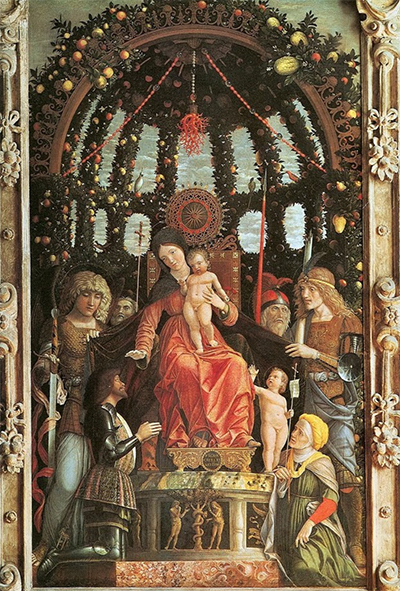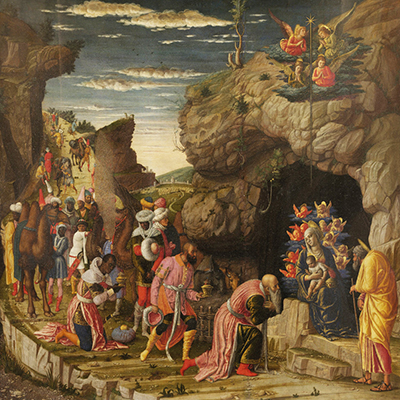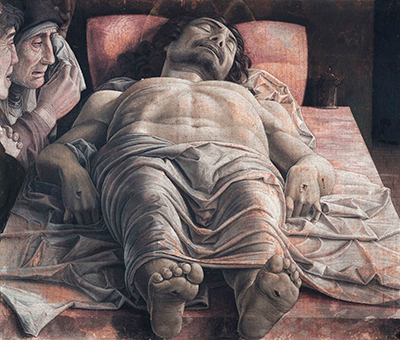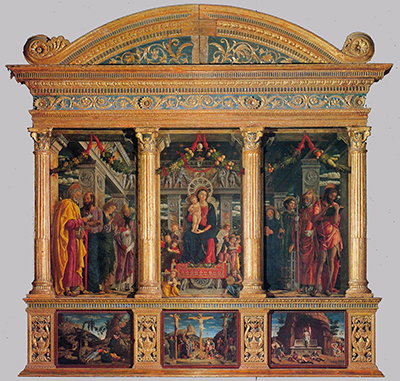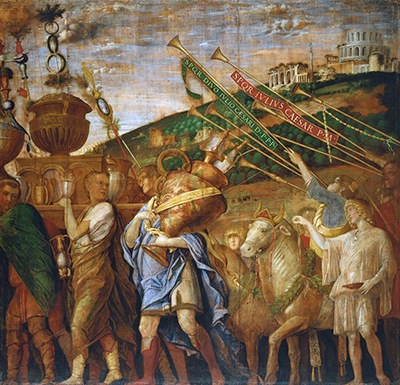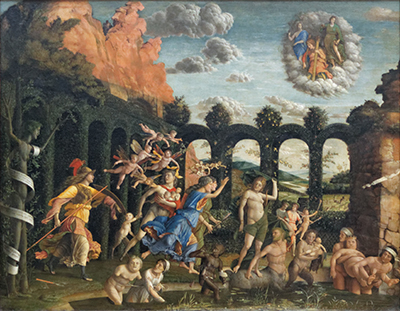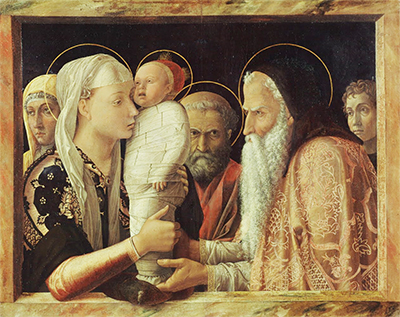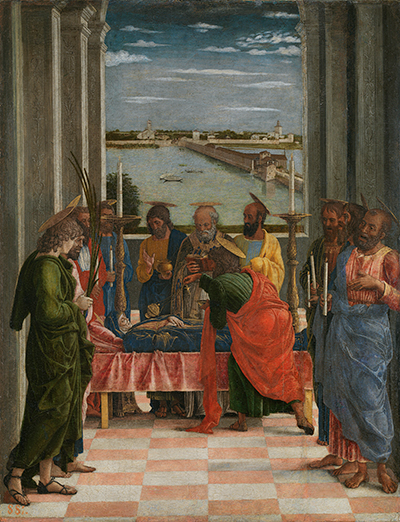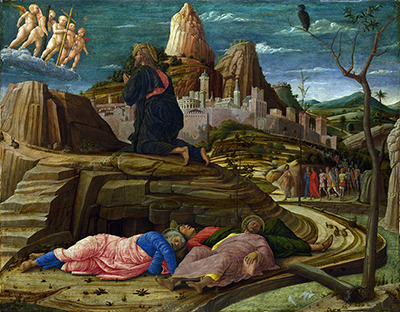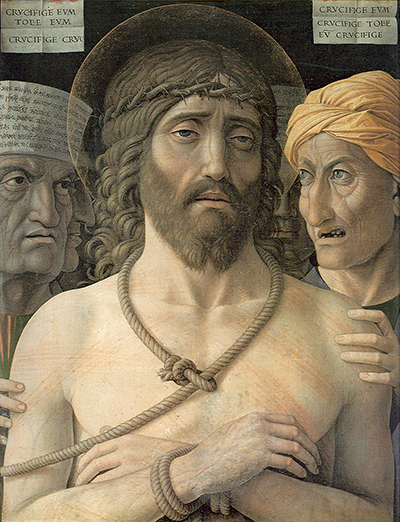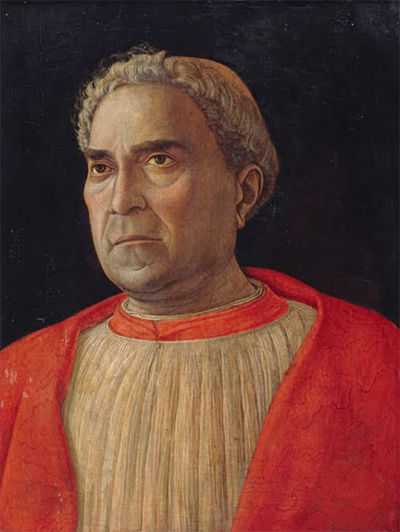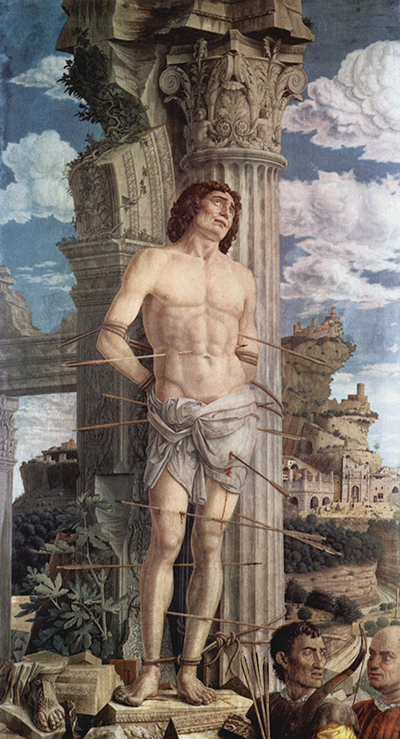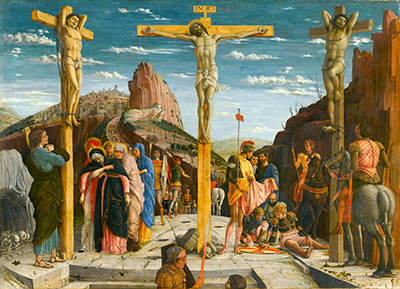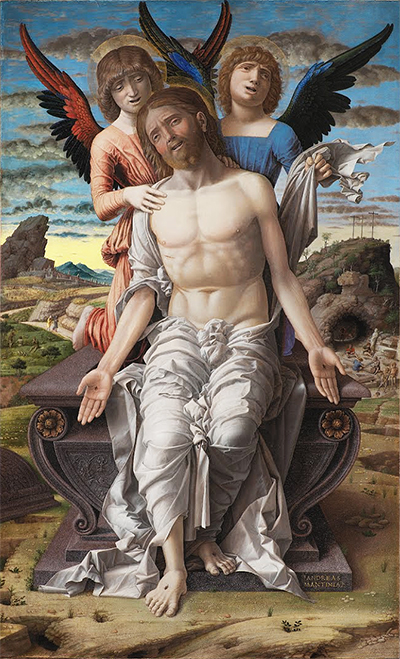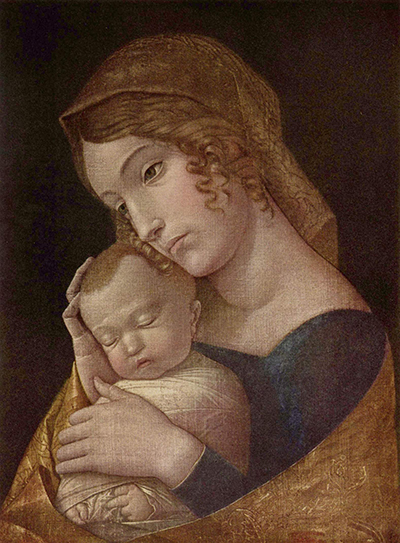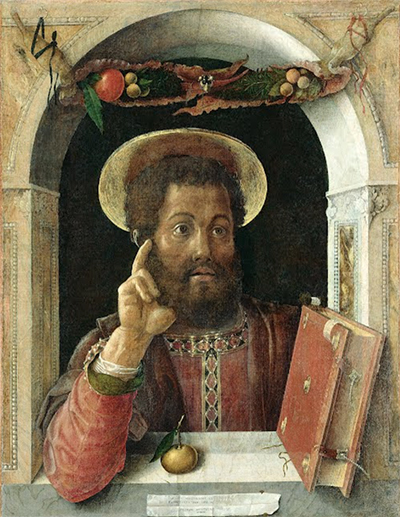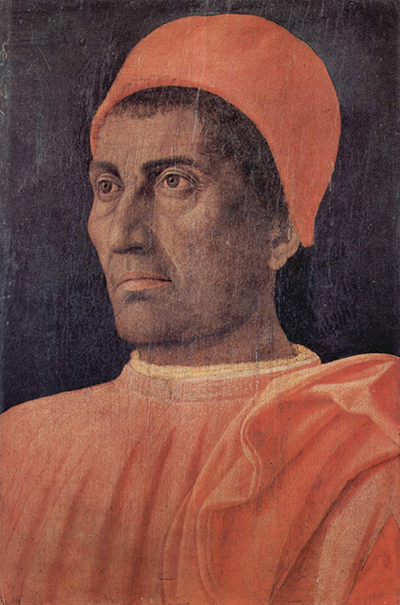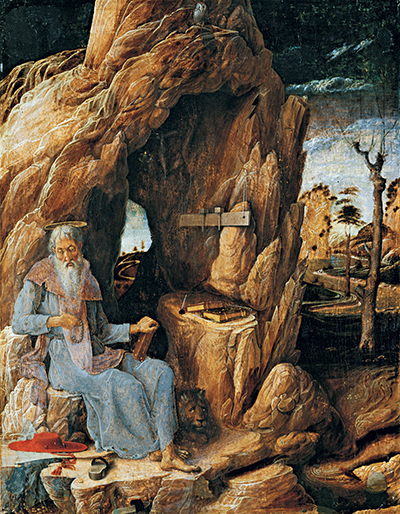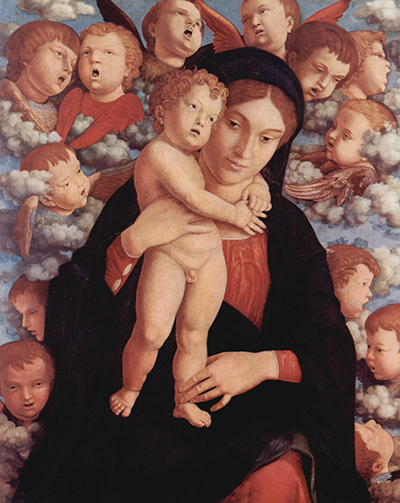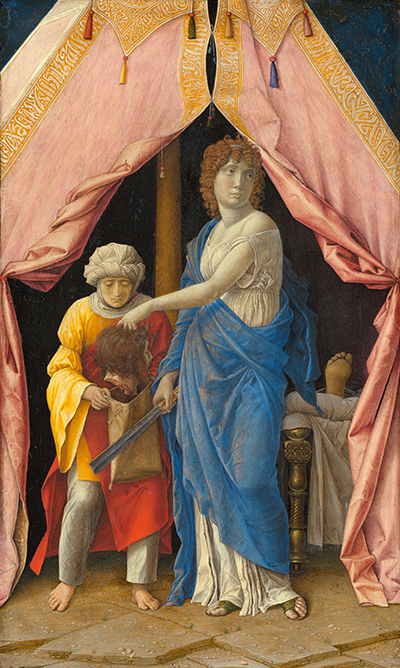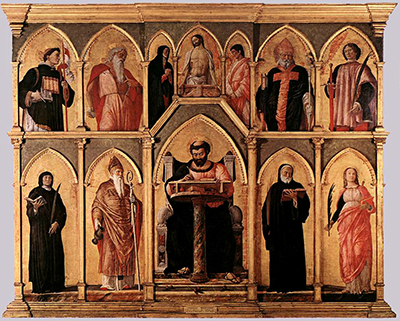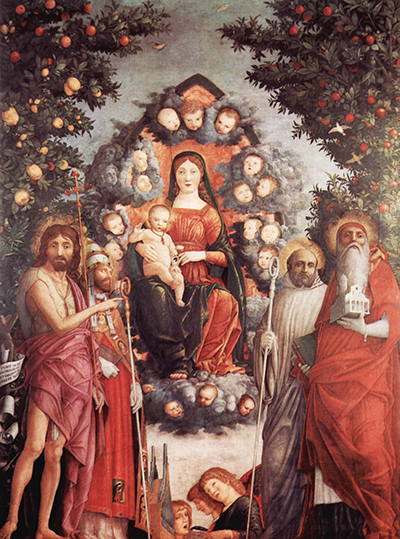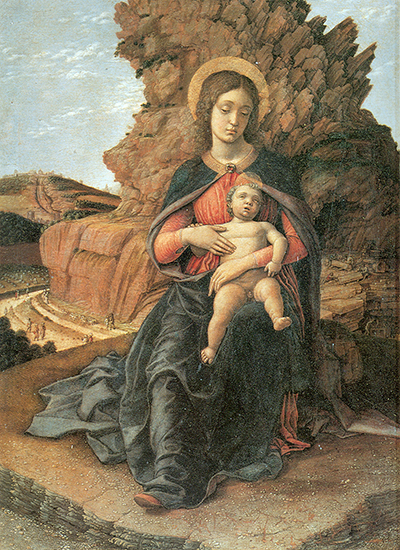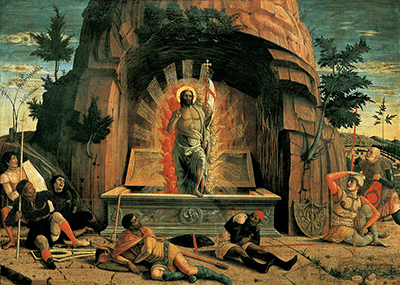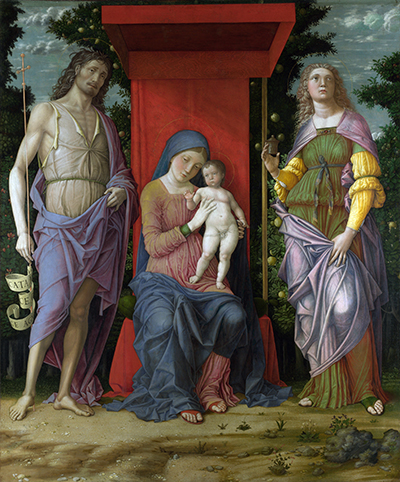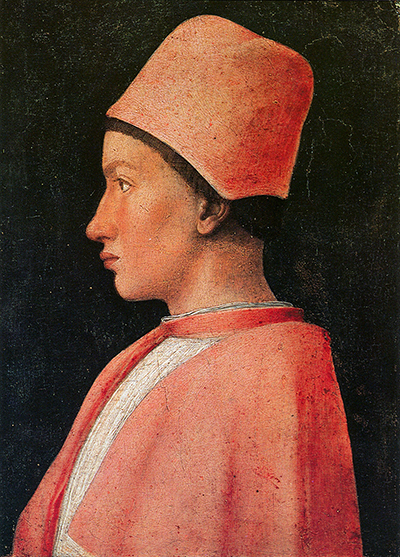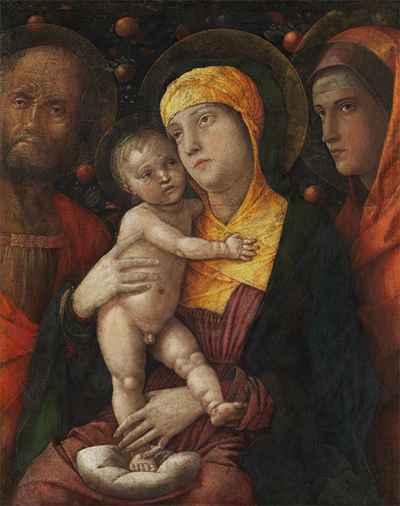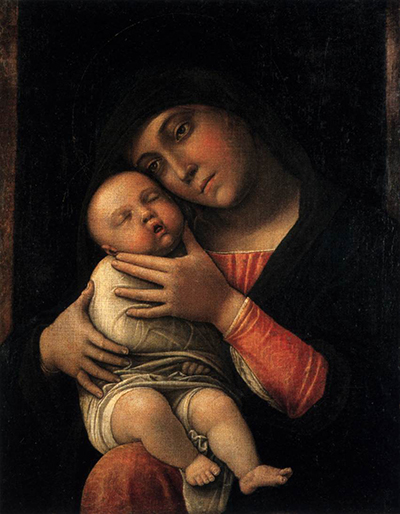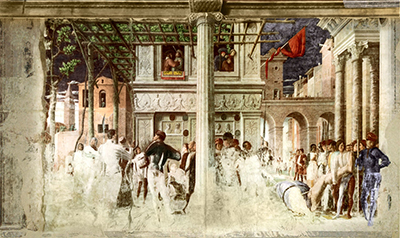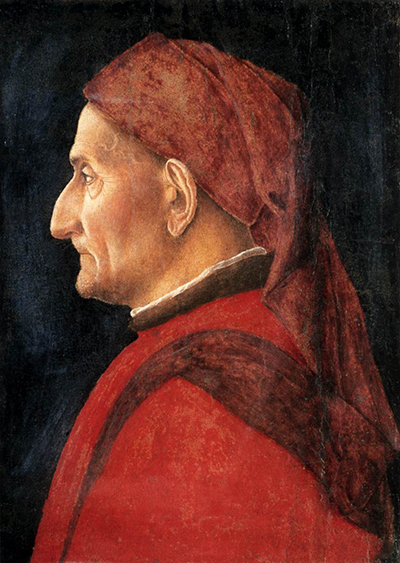Andrea Mantegna was largely influenced by Florentine painters. He was of observing nature, and the painter probably studied Fra Filippo and Paolo Uccello, as well as Donatello, some of whose works were in Paduan edifices during that time, which allowed Andrea to see the masters work in person.
Andrea gained the knowledge of colour from the Venetian Giovanni Bellini, who was living in Padua at that time and was connected with Andrea by marriage.
The painter was initially influenced by his old teacher's strictures; however, his later subjects, for instance, the ones from the legend Saint Christopher, combine Andrea's sculptural style together with a greater sense of vivacity and naturalism. Andrea was the favourite pupil; his teacher taught him the Latin language plus instructed the painter to read fragments of Roman sculpture. Also, the master preferred forced perspective, which is seen in Andrea's later innovations.
Since he was trained in marbles study and the sharpness of the antique, Andrea openly avowed that he regarded ancient art being superior to nature as more eclectic in form. Consequently, the artist exercised precision in outline and privileged the figure. Thus, Andrea's work generally tended toward rigidity and demonstrated an austere wholeness instead of graceful sensitivity of expression. Andrea's draperies are tight plus closely folded, being studied from models that have been draped in paper plus woven fabrics that have been gummed in place. Andrea's figures are slim, bony and muscular; the action is impetuous, yet it's of arrested energy. Tawny landscape, gritty with scattering pebbles, indicates the athletic hauteur of Andrea's style.
Andrea never changed the style he adopted in Padua (now Italy), although his colouring, which was initially undecided and neutral, strengthened and matured. Throughout Andrea's career, there's more balancing of colour than the tone fineness. Optical illusion was one of the painter's great aims and it was executed by a perspective mastery which, although not always mathematically accurate, attained a startling effect for the times. Although Andrea was successful and admired at his native Padua, he left the place when he was still young and never returned. Squarcione's hostility has been indicated as the cause.
Andrea spent the remaining years of his life in Rome, Mantua and Verona; it hasn't been confirmed that the artist also stayed in Florence and Florence. While he was in Verona city (between 1457 and 1459), the artist created a grand altarpiece for Basilica di San Zeno, which depicts a Madonna and angels together with 4 saints on all sides on the triptych San Zeno Altarpiece in Verona. This was the first good Renaissance art example in Verona city, and it inspired a similar picture by Girolamo dai Libri, a Veronese artist.
Andrea's enduring love for antiquity's art and culture is also seen in the painter's emphasis on accurate proportion when he is depicting the figure. His oeuvre is further defined by his unique compositional choices, usually incorporating perspective plus foreshortening to an exaggerated extent.
When looking at Andrea's paintings, viewers are struck by the abundance of coloured stones so lovingly and meticulously depicted in the artist fictive architecture. This was a taste that was reflected in the buildings of his time. The increasing adherence to the classical orders discipline didn't prevent an extremely amusing atavistic admiration for precious minerals. The values implied in such painted architecture might seem difficult to reconcile, especially with the changing priorities in the 15th century towards the artist's materials.
When it comes to classical taste, Andrea was distancing all contemporary competition. Although substantially related to the fifteenth century, the painter's influence on the trends and style of his age was generally marked over Italian art. Andrea's brother-in-law, Giovanni Bellini, followed the artist's lead in his earlier works. Leonardo da Vinci took from Andrea the use of decorations with fruit and festoons. Albrecht Dürer was also influenced by Andrea's style during his 2 two trips to Italy and reproduced several of his engravings.
Andrea's main legacy is regarded as the spatial illusionism introduction, both in sacra conversazione and in fresco paintings. The artist's tradition of decorating ceilings was followed for almost 300 years. For instance, the faint cupola of the bridal chamber (Camera degli Sposi or Camera picta), Correggio, which was built on the research of Andrea's master plus collaborator into perspective constructions and eventually produced a masterwork such as the dome of Parma Cathedral.



